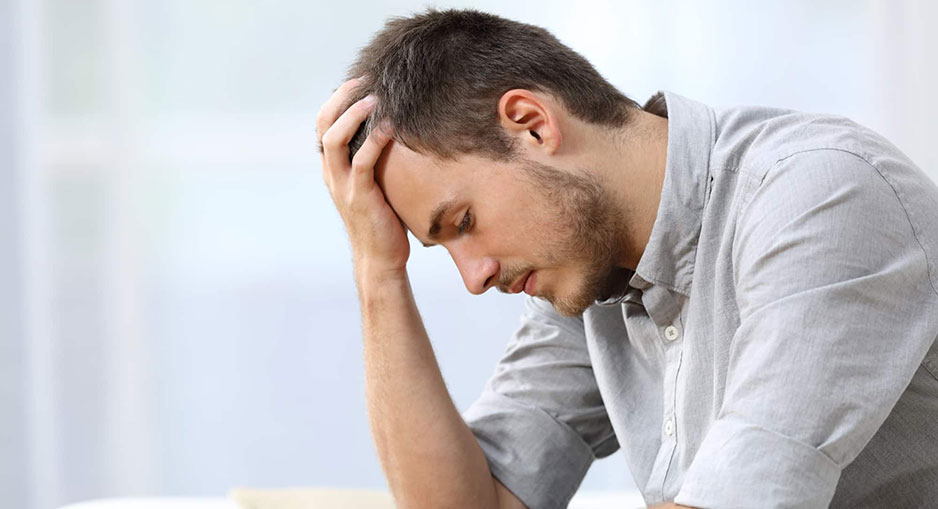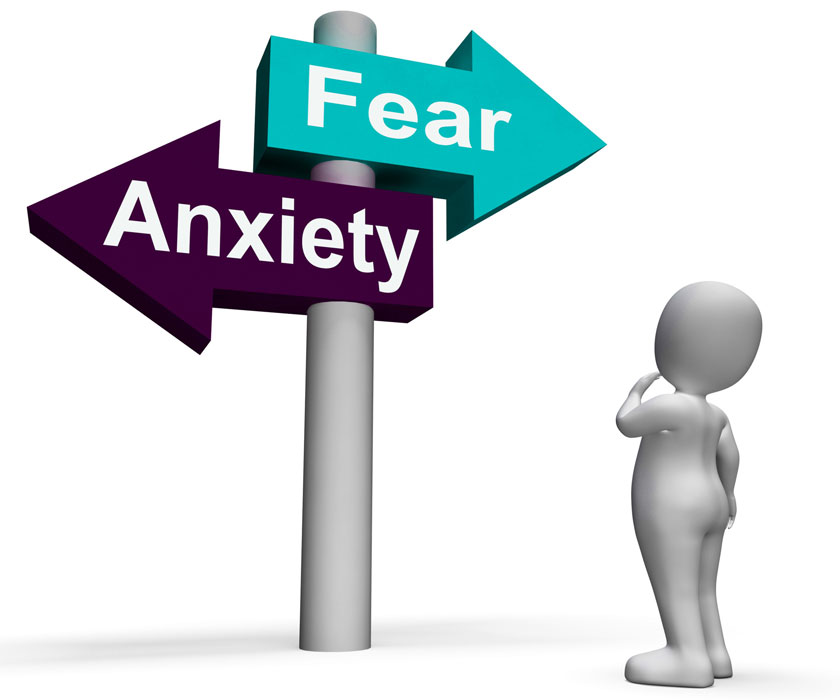Post-Covid Fear and Anxiety

Why do I remain anxious now that I am recovering from COVID-19?
You, or people around you, may expect you to have left any fear and anxiety behind when you left the hospital, or after a specific amount of time has passed. People might even say things like “well you could relax now that you know you are out of danger”. If you can remember just one thing about this section, we hope it will be COVID, being in the hospital, or trying to look for help out of the hospital, could be really frightening experiences, therefore fear and anxiety are completely normal.
Fear is a common, helpful, part of our make-up. If we really had no fear, we would likely be involved in some form of accident very rapidly. The fear response is sometimes known as the ‘Fight or Flight response as it involves a series of reactions that occur automatically in our bodies: these include raised heart rate, breathing faster, sweating, blood diverting from the digestive system leading to ‘butterflies’ feeling, and narrowing of attention. These could seem quite strange or scary, but they all serve a function and offer what could be a life-saving edge if we are faced with physical danger, for example, a wild animal.
Many of the things that trigger this response in everyday life, although are not immediate physical dangers. For those situations, it could be helpful to use ways of lowering this response as the fear response is triggered very quickly but takes much longer to ‘reset’.
If you are faced with a scary situation, say walking in the park and a vicious dog unexpectedly appears barking and showing its teeth, you would not require to wait for your fear response to kick in. It will probably occur before you even realize it as it relies on a part of the brain that is triggered before our conscious thoughts. If you then walk through the same park the next day or even the next week, you will almost certainly experience some of the same anxiety you felt before, even if the dog is not there, because your mind has learned an association between things in that environment and danger.
If you were at the hospital the response works in the same way. Your brain might well have learned an association between specific physical sensations, images, sounds, smells, and danger. This means if you experience specific sensations, for example feeling like you cannot breathe, or have an image go through your mind (or a nightmare) of the intensive care unit (ICU), your ‘Fight or Flight’ response might be triggered automatically.
Over time, this response will slowly reduce, but it might take weeks or even months and there are some things that could get in the way of this natural ‘resetting’ of your fear response.

These include:
Avoidance – Sometimes people circumvent any reminder of the traumatic situation.
Suppressing thoughts and images – It makes perfect sense to try to stop distressing thoughts or images from occurring psychologists call this “suppression”. Although, research shows that trying not to think about something usually has completely the opposite effect. If you find this difficult to believe, try hard not to think about a giant pink rabbit. It should be easy but after 5 minutes you may be surprised to find the only thing you could think of is that great big pink cuddly creature!
If you are experiencing intrusive images and thoughts from being in the hospital, or other traumatic events, it could be helpful to know these are your brain’s way of trying to make sense of your experiences. You could also take some of the fear out of them by reminding yourself that you are safe now. Short-term distractions could help too. It is not the same as trying to suppress the intrusions. However, it is a way of gently focusing your mind elsewhere, for example, by naming five things you could see, five things you could hear, and five things you could feel.
There are other things that could keep fear going, (just like continuing to add fuel to a fire that otherwise would go out). These are:
Your attention becoming excessively concentrated on your body sensations - Our attention concentrates on things we are afraid of again we do not require to think about doing this, it occurs naturally. If the person in our instance returns to the park, they are likely to be on the lookout for dogs. In the same way, if you experience a scary physical symptom it is normal for your attention to become concentrated on it.
Although, if your attention concentrates on a part of your body, you automatically start to notice things you would not normally notice, and these become amplified. You could test this by concentrating on your right hand (or left hand, or foot, whichever you prefer). Try to concentrate all your attention on that part of your body. Do you notice anything? Is it tingling, feeling hot? You almost certainly noticed far more than you often do. To readjust, find something else to concentrate your attention on like watching the TV or going for a short walk.
Unhelpful thoughts and beliefs – Most of the time we do not pay much attention to what goes through our minds. When somebody comes to us and says “What were you thinking about back then?”, we usually truthfully reply, “I do not know”. Although, what passes through our mind plays a key role in keeping the anxiety ‘fire’ lit. For example, if every time you heard a noise in your home you were to think “Someone’s trying to break in!” you would feel anxious or nervous almost the entire time. Of course, it is possible but there are also many other, more likely, explanations for example the wind, a cat, next door’s TV, etc.
Unhelpful thoughts usually pop into people’s minds automatically during recovery. They could take many forms or kinds from “I am having a heart attack!” or “I have got the coronavirus again”, to “I am never going to get any better than this!”
If you try to notice what is going through your mind when you are feeling especially anxious and write them down, you could catch your unhelpful thoughts. Your first thought maybe “Well I am going to ensure I prevent or stop myself thinking that from now on!”. Although, since we know that thought suppression is not helpful, hopefully, you will think “However I cannot prevent myself having worrying thoughts, I should be able to cope with them differently.”
So what could you do? One approach is to think of options for the anxious thought and test them out. So, if your anxious thought is “I am having a heart attack or heart failure!”, you can think “I am just not as fit as I used to be” or “I’m having a panic attack”. Testing these options may involve asking yourself “Do these symptoms match having a heart attack?” “Have I ever had these symptoms before? What happened then?”, “Has my general practitioner (GP)/physio/nurse given me an explanation of what may explain me feeling these symptoms when I try and walk around the park?”
You could do this more easily by writing a ‘balancing thinking’ chart:
Draw a table with 2 columns.
Write down unnecessary anxious thoughts in the first column, then more balanced thoughts in the second.
For instance, in column 1, you might write “My chest feels tight, if I am not breathing properly I may have a heart attack” and in column 2, “The doctor or primary care physician said it will take some time for the stiffness in my lungs to get better but she explained I am still getting plenty of oxygen into my body and doing the exercises I have been given will improve my health”.
Checking and reassurance-seeking – If you are experiencing a physical symptom of concern, it makes sense to monitor it. Maybe check every hour, or ask someone in the family if they notice any changes. If it is still there phone 111 or goes to your general practitioner (GP).
Although, frequent checking could also keep the anxiety going. Checking causes us to notice things that we would not generally because it shifts our attention, as explained above. If you think checking your body may be making your anxiety worse try slowly reducing it. You could do this by making a schedule to check, say every two hours to begin, and then slowly reduce how usually you do so every day over a week.
Reassurance-seeking – If you notice a symptom, especially if it is new, it is natural to want to know what it is. Although, sometimes when we look for help and go to a doctor or primary care physician we are sent for tests and, if they come back normal, we are told “We know that it isn’t X, Y, or Z”. Usually, this does not leave you feeling any better; in fact, it could make you think “might be they missed something?” or “might be I have got W?”. This process could cause patients to run around in circles for months, and sometimes even years. A good rule of thumb is to follow advice from NHS 111 and not look for help purely to lower anxiety.
It could help to ask your doctor or primary care physician or health professional a different question – “I know that you have said this is unlikely to be anything severe but could you help me understand what may be causing the symptoms that I am experiencing?”. You might well find the answer helps to lower anxiety much more than reassurance or other examinations.
A different kind of reassurance-seeking is searching the internet or posting on social media. If you are concerned about a symptom, it is understandable to try to find information or ask other people if the same thing occurred to them.
Websites and social media groups could offer valuable support and lower isolation; although using them could sometimes also make anxiety worse. This is because however people posting on social media might be completely truthful about their problems, the overall picture is usually not representative. People who had the same symptoms but they improved quickly without any issues are much less likely to post and therefore the ‘worst-case scenario’ could seem much more likely than it really is. Moreover, however people’s symptoms might appear identical, their condition and background might be very different from your own. Use trusted websites and social media groups to obtain information and support but be very careful when interpreting your own symptoms based on this information.
Lastly, try monitoring how long you are spending on COVID websites and social media groups and whether you feel more, or less, anxious afterward. If you think checking online may be making your anxiety worse, take a break for a couple of days and see what difference it makes. You could also try to change how you use the site: seek help and support rather than for certain answers to worries about your symptoms. However, try using the advice above about asking your general practitioner (GP) or other healthcare professional.
What else could I do to help manage my anxiety and fear?
There are lots of different techniques that could help with managing anxiety and fear:
-
Set a ‘worry time’
We know that trying not to think about worries is likely to just make them worse. An option is to schedule a specific time in the day when you will think about worries. Then if a worrying thought pops into your mind, day or night, note it down and continue doing what you were doing and come back to it in your ‘worry time’.
-
Keep busy with other things
When you feel especially anxious, try distracting yourself by going for a walk or calling a friend.
-
Get back to normal activities
Try to slowly begin doing things you have been avoiding because of your health worries, for example, gardening or DIY.

Just relax!
Relaxing is usually easier said than done when you are feeling anxious and different approaches work for different people. Here are some ideas
Visualization - Find a place (real or imagined) to create an image in your mind that brings about a sense of calm or relaxation. You will be able to recognize this when you notice you begin to breathe more slowly, or your shoulders start to relax. It may be a blue ocean, a beach, a forest or field, or somewhere you have been on holiday. Try to really get a feel for being in that place; what could you see, hear and smell? Would you be able to feel any temperature, for example, the sun on your skin or a cool breeze across your face?
Mindfulness meditation is an ancient technique derived from Buddhism, practiced every single day by millions of people who are not Buddhists to help manage stress. The main aim is to concentrate your attention on the present moment and to keep bringing your attention back to this even when it wanders off onto worries and physical symptoms. It takes some time and patience to learn, so if you think this may be a helpful approach, try a self-guided learning package online or via an app and if you find it useful, try enrolling in an instructor-led course, either online or in-person.
When do I need to look for additional help?
If after trying these strategies you are still experiencing a high level of anxiety or anxiety that is interfering with your daily life and stopping you from doing things, do get further help. Talk to your general practitioner (GP) and tell them what you are experiencing. Do not feel you require to justify what you are saying by talking about physical symptoms, explain what you are feeling and thinking.
If you continue to experience frequent distressing pictures or thoughts associated with your hospital stay or find that reminders of this lead to an intense reaction, do mention this to your general practitioner (GP), or another health professional.
Psychological (or ‘talking’) therapies are available free on the NHS and you could get them online or over the telephone through your local ‘Improving Access to Psychological Therapies (IAPT)’ service.
If you or anyone you know is suffering from post covid fear and anxiety problems, our expert providers at Post Covid Centers will take care of your health and help you recover.
Call 469-545-9983 to book a telehealth appointment for a home check-up.
Post Covid Syndrome vs. Fatigue
While COVID-19 is a short-lived disease in most people, others experien...
Post Covid Syndrome vs. Skin Weakness Problems
A new study illustrates that some patients with COVID-19 disease have continuous skin-associated symptoms...
RELATED BLOGS
